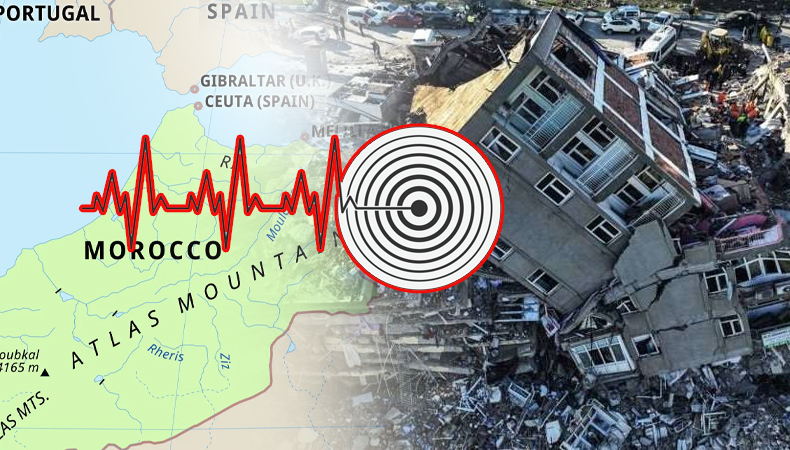Morocco Earthquake: Rescue Efforts Underway

The historic city of Marrakech as well as villages in the Atlas Mountains were all damaged by a rare, strong earthquake that struck Morocco late on Friday night. Morocco Earthquake brings fear and damage!
Fearing aftershocks, men, women, and kids stayed outside in the streets.
Early on Saturday, the Moroccan Interior Ministry announced that there had been at least 296 fatalities in the earthquake-affected provinces. 153 injured people were also taken to hospitals for medical attention. The ministry of Morocco stated that damage mostly happened in rural areas.
Videos of destroyed buildings and damaged portions of the famous red walls that surround Marrakech’s old city—a UNESCO World Heritage site—were posted online by Moroccans. Videos of screams and restaurant evacuations in the city were posted online by tourists and other people as throbbing club music played.
The mayor of a town close to the epicentre of the earthquake reported to Moroccan news outlet 2M that several homes in neighbouring towns had partially or completely collapsed and that roads and electricity had been cut off in some areas.
The mayor of Talat N’Yaaqoub, Abderrahim Ait Daoud, stated that while efforts are being made to clear roads in Al Haouz Province to allow access for ambulances and aid to those in need, it will take some time to determine the full extent of the damage due to the distances between mountain villages.
According to local media, roads leading to the mountainous area surrounding the epicenter were clogged with cars and blocked by falling rocks, slowing rescue operations.
Keep Reading
The U.S. Geological Survey reported that the earthquake, which struck at 11:11 p.m. (2211 GMT) and caused shaking that lasted several seconds, had a preliminary magnitude of 6.8. A magnitude-4.9 aftershock was recorded 19 minutes later, according to the American agency.
Around 70 kilometres (43.5 miles) south of Marrakech, in the Al Haouz Province, was where the epicentre of the tremor that occurred on Friday was located.
Morocco’s seismic agency estimated the epicentre to be 8 kilometres (5 miles) below the surface of the Earth, compared to the USGS’s claim that it was 18 kilometres (11 miles) below. Such shallow earthquakes are more dangerous in both scenarios.
In North Africa, earthquakes are not common. The National Institute of Geophysics’ Lahcen Mhanni, Head of the Seismic Monitoring and Warning Department, told 2M TV that the earthquake was the strongest ever recorded in the mountain region.
Numerous fatalities were caused by a magnitude 5.8 earthquake that occurred in 1960 close to the Moroccan city of Agadir.
Morocco changed its building regulations in response to the Agadir earthquake, but many structures, particularly rural homes, are not constructed to withstand such tremors.
More than 600 people died in a 6.4 magnitude earthquake that occurred in 2004 close to the Mediterranean coastal city of Al Hoceima.
According to the Portuguese Institute for Sea and Atmosphere and Algeria’s Civil Defence agency, which is in charge of emergency response, Friday’s earthquake was felt as far away as Portugal and Algeria.







